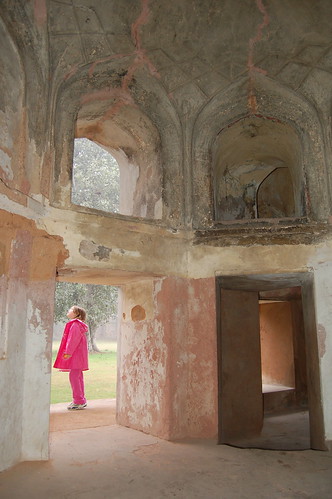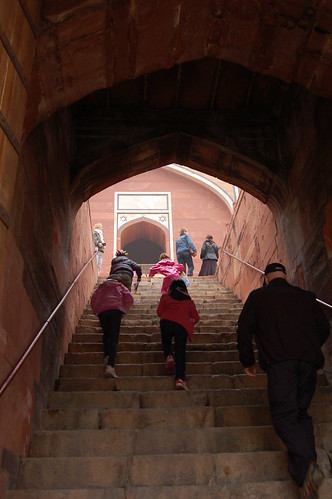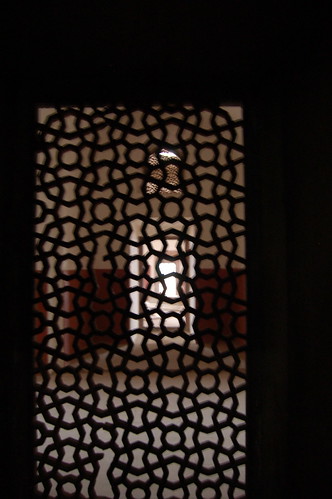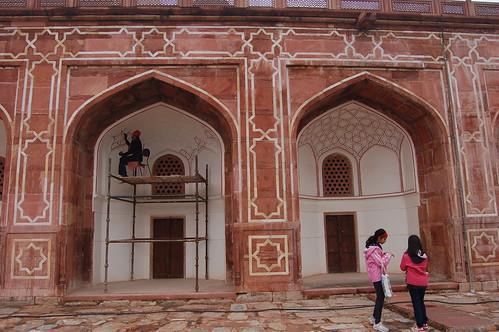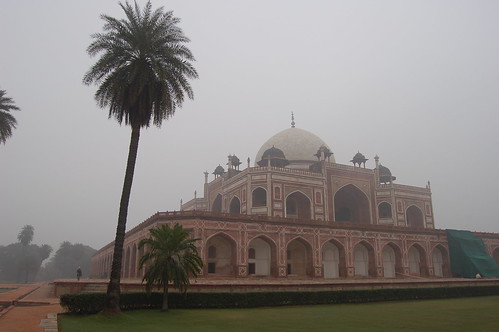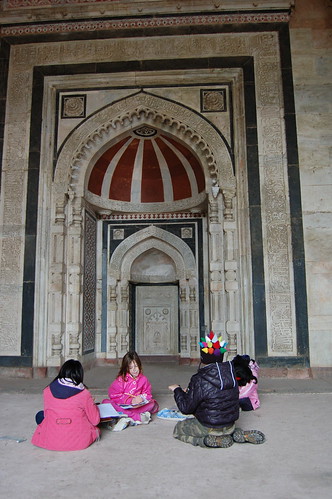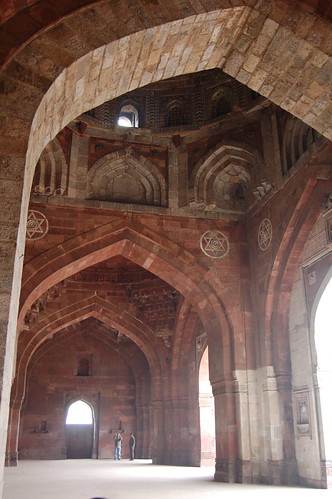Last week, the whole third grade visited two historical sites – Humayun’s Tomb and Purana Qila – just a short drive from the American Embassy School. My group visited Humayun’s Tomb first, clipboards in hand to record notes in their “See-Think-Wonder” booklets. I was thrilled to meet Gayetri, a third-grader’s mom and a New Delhi native, who joined our group and shared her expertise on the two sites. As the kids sketched pictures inside the austere 450-year-old tomb, I looked up at the carved lattice screens and imagined veiled women standing on the balcony praying over the marble memorial of their fallen emperor. How fortunate are these students who get to walk in the footsteps of people they study in the classroom? How exciting to see the excavation and restoration first hand!
Construction on Humayun’s Tomb started in 1565, 14 years after his death. The second Mughal Emperor, he ruled present day Afghanistan, Pakistan, and parts of northern India from 1530–1540 and again from 1555–1556. (During the gap, the region came under the rule of Pashtun noble Sher Shah Suri, but Humayun’s army ultimately won back the territory.) His tomb was the first “paradise garden”-concept tomb on the Indian subcontinent and inspired many architectural innovations. Stone channels criss-cross the complex, providing water for irrigation. We strolled through the peaceful gardens, climbed steep steps to the terrace, and entered the 47-meter-high tomb. We all agreed the low-lying fog added to the tomb’s mystique. As we were leaving the UNESCO World Heritage Site, the children excitedly spotted a worker painting designs in a restored alcove.
If you’re interested in learning more about Humayun’s Tomb, Wikipedia has a nice page about it. The Aga Khan Development Network website explains the restoration work under way at the site.
After a short bus ride, the kids piled out at Purana Qila. Emperor Humayun founded the city of Dina-panah (the sixth city to be located in what is now Delhi) in 1533, and Purana Qila was the city’s inner fort. Some highlights for the students and me included the ruins of a hamam that had cutting-edge steam rooms and running hot water (which is more than I can say for my New Delhi apartment); a baoli (well) with 89 steps leading down to the fort’s source of fresh water; and the Qila-i-Kuna Mosque, where our students hunkered down for a few moments of quiet. They even knelt in the mihrab, facing Mecca, to emulate Muslims praying here. I wasn’t sure whether that would be offensive to anyone, but the kids found it meaningful, so I just let it go.

Another fascinating building at Purana Qila was the Sher Mandel, Humayun’s observatory and library. On Jan. 24, 1556, the emperor had been star gazing when he reportedly rushed down the stairs to evening prayers. Tripping over his long robe, he fell and died of his injuries two days later.

Good ‘ol Wikipedia does a fine job reporting on Purana Qila, if you want to read more.
Seeing history unfold era by era is one of my favorite parts of exploring India. At both our field trip destinations, I was reminded of Humayun’s son, Akbar, and great-grandson, Shah Jahan. I visited some of their old stomping grounds – including the Taj Mahal – near Agra last August.


